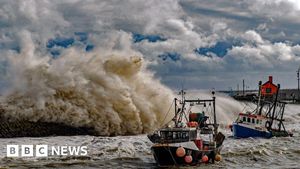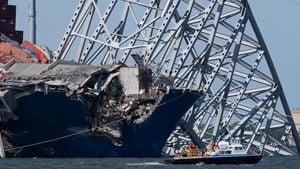Infrastructure developments are booming around the world, but have you ever wondered about the silent guardians ensuring these structures can withstand the onslaught of nature? That's right; it's all about structural integrity testing. Recently, the wind tunnel tests for new infrastructural projects like the Zuari Bridge and the Chikhaldara Skywalk have been making headlines, showcasing the importance of these safety measures.
The new Zuari Bridge, located on the Zuari River, has spurred excitement among locals and travelers alike. At the heart of ensuring its durability, engineers have initiated wind tunnel tests to check how well the bridge's towers can withstand strong winds and their overall structural stability. These tests simulate extreme weather conditions, measuring the forces acting on the structure. This way, engineers can make necessary adjustments before the bridge is completed, promising safety for anyone who will cross it once it opens.
This project has generated dialogue about the balance of ambitious infrastructure creations and safety measures. Residents of the nearby region have expressed their eagerness for the bridge to be completed, as it represents not just engineering prowess but also potential economic growth. The bridge is being positioned as part of a larger infrastructure upgrade meant to connect various parts of Goa more efficiently.
Meanwhile, the Chikhaldara Skywalk has been another point of contention, drawing attention from both locals and tourists. This skywalk, perched high above the picturesque Chikhaldara region, boasts breathtaking views. But its construction hasn't been without challenges. Engineers have also opted for wind tunnel tests on the skywalk to evaluate its design against wind pressures and other environmental factors.
The data gathered from these wind tunnel tests prove invaluable. Not only do they aid engineers during the design and construction phases, but they also help avoid potential catastrophes. For example, if the structure were to collapse due to sudden wind blasts, it could result in tragic consequences for those using it. Thus, safety takes precedence over aesthetic appearances when it involves public infrastructure.
What does testing look like, though? Engineers place scale models of the structures inside large wind tunnels, where powerful fans simulate wind currents. By observing how these scaled-down versions react to varied air pressures and directions, engineers can predict how the full-scale structure will behave and make adjustments accordingly. It's like putting your Lego creation to the ultimate test before introducing it to the real world.
Interestingly, structural integrity testing isn't limited to just wind tunnels. There are various methods employed to analyze the resilience of constructions. This includes using strain gauges, which measure how much the building materials bend or deform under stress; vibration testing to check how structures handle oscillations; and ground-penetration radar to assess foundations and sub-surfaces before construction begins.
Why does all this matter, though? Well, history records catastrophic infrastructure failures, often leading to loss of life and extensive financial setbacks. A case in point is the collapse of the Tacoma Narrows Bridge back in 1940, which served as a humbling lesson for engineers worldwide. The bridge oscillated wildly due to aerodynamic forces, leading to its demise. After such failures, safety protocols have improved dramatically, and wind tunnel testing is now considered standard practice.
The compelling narrative behind structural testing has spun many stories, with researchers dedicated to ensuring public safety through innovative engineering practices. The conversation around these tests brings to light the underlying message: even the grandest architectural designs require scrutiny and rigorous analysis to assure their longevity and safety.
Looking forward, it's clear the need for adequate testing and analysis will only grow, particularly as climate change continues to produce more extreme weather events. Future infrastructures are expected to employ cutting-edge technology to meet stricter safety regulations, efficiency standards, and environmental resilience.
The results from both the Zuari Bridge and Chikhaldara Skywalk wind tunnel tests are expected to be released soon. Local authorities eagerly await these reports, which will inform whether both projects can proceed on schedule and as originally planned.
Until the final analyses are published, the excitement around these projects reminds us of the beauty and complexity intertwined with infrastructural development. It reminds us of how human ingenuity continually seeks to blend artistry with pragmatism, ensuring structures stand tall against the test of time—and nature.



